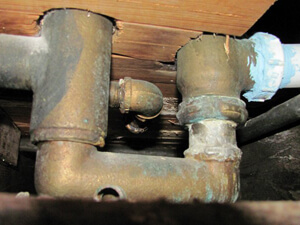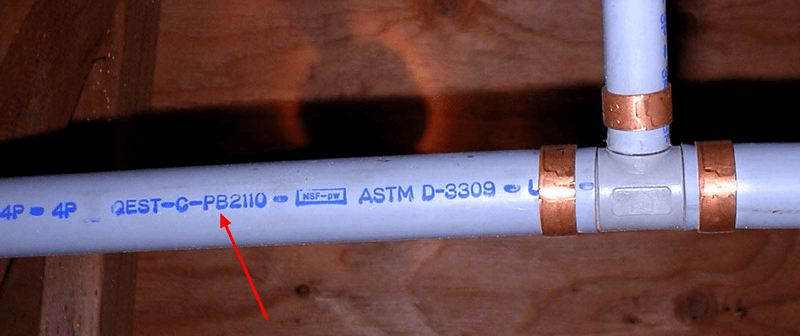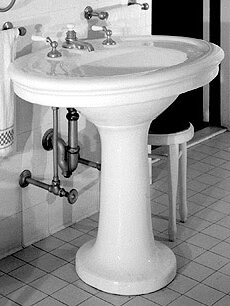Top Plumbing Problems in Old Houses
And, how to solve them.
Posted 05:37 November 14, 2021
Last Updated 05:59 December 04, 2021
 Older houses are often cherished for their character, charm and sometimes, historical significance. Many that are still standing were built to unique architectural specifications and constructed with materials that would be prohibitively expensive today. For young people looking to buy their first home, an older home that needs a little extra care is often an attractive (and sometimes their only) option.
Older houses are often cherished for their character, charm and sometimes, historical significance. Many that are still standing were built to unique architectural specifications and constructed with materials that would be prohibitively expensive today. For young people looking to buy their first home, an older home that needs a little extra care is often an attractive (and sometimes their only) option.
Common plumbing problems in older homes and solutions
Just because old homes may have an array of plumbing problems doesn't mean there aren't any solutions or options. Here are a few of the most common plumbing problems you will likely encounter in your old home. Find out how you can solve these problems as well.
Old Pipe Materials
Any home built before 1990 could have pipes made from materials that are no longer approved by current building codes. This in and of itself is not a problem, it just means a new house could not be built today in the same way your older home was built. If the home has been renovated within the last few decades, some or all of these pipes might have been replaced. But it's always a good idea to have your home's plumbing inspected to ensure there are no unexpected surprises.
Lead
Most commonly used for sewer lines and water main lines, lead is one of the oldest metals used in piping. Although the US has restricted the use of lead since the 1920s, it wasn't banned completely at the national level until Congress amended the Safe Drinking Water Act in 1986. Similarly, lead paint was banned in the US in 1978. If your home was built before 1978 it probably has lead based paint.
Galvanized
Commonly used for water lines in homes built before the 1970s, galvanized pipe is made of iron and coated with a layer of zinc. Over time the zinc erodes and leaves the pipe very susceptible to corrosion and breakage. Galvanized pipe has an average lifespan of about 60 years, then it must be replaced.

Polybutylene
Heralded as the pipe of the future when it appeared in the late 1970s, polybutylene pipe was introduced as a replacement for expensive copper lines. It saw widespread use throughout the 1980s. Unfortunately, the manufacturer was forced to pay out millions of dollars after a class-action lawsuit (Cox v. Shell Oil) claimed polybutylene pipelines were defective. The manufacturer never acknowledged a defect or wrongdoing, but the lawsuit was settled for over $1 billion in 1995. Chlorine and chloramine were found in public water systems that caused a chemical reaction with the plastic, leading the plastic to flake, become brittle, crack, and ultimately fail. Polybutylene was used mostly in mobile home installations, but any home constructed in between 1978 and 1997 may have these plastic pipes somewhere. No longer manufactured or rated by US building codes, any existing polybutylene pipes should be replaced before they fail.
Pipe Bellies
Pipes installed under homes slabs are affected by the gradual movement and shifting of the house over time. If a pipe shifts downward, it can create a negative slope, or pipe belly that restricts the flow of water and creates pools that accumulate waste and sediment. If left unattended, pipe bellies can cause stoppages, breaks, and leaks over time.
Depending on the situation, trenchless pipelining may be the best solution for pipe bellies. However, you will need a professional plumber to inspect the scene and check out how bad it is.
Sewer Line Failure
No one thinks much about their sewer lines until they fail. Sewage seeps into the ground and a foul wastewater smell fills up the house. Sewer lines in older homes weren't built for today's numbersome modern appliances (garbage disposals, dishwashers, laundry machines, etc). Older toilets forced more water through them, making them more susceptible to failure, especially if there's been extensive remodeling. Older homes are also more likely to have issues with sewer lines being damaged by tree roots.
Again, trenchless pipe repair is usually the best solution. If the area where the line is broke is easily accessible, almost any repair method can be used.

Outdated Fixtures
Older homes often have fixtures, faucets, and supply line connections that are nearing the end of their lifespan. General wear and corrosion can lead to restricted water flow, broken knobs, or leaks that make using water in the house an inconvenience at best and an expensive disaster at worse.
Summary
If you own an older home it will need a bit more maintenance and preventative care. If you're not comfortable performing inspections on your own, contact the professionals here at All Trades. We service Las Vegas, Henderson, Boulder City, and most of Clark County, Nevada.



